Accepted Scientific Name: Escobaria tuberculosa (Engelm.) Britton & Rose
Cactaceae (Britton & Rose) 4: 54 (fig. 51). 1923 Britton & Rose
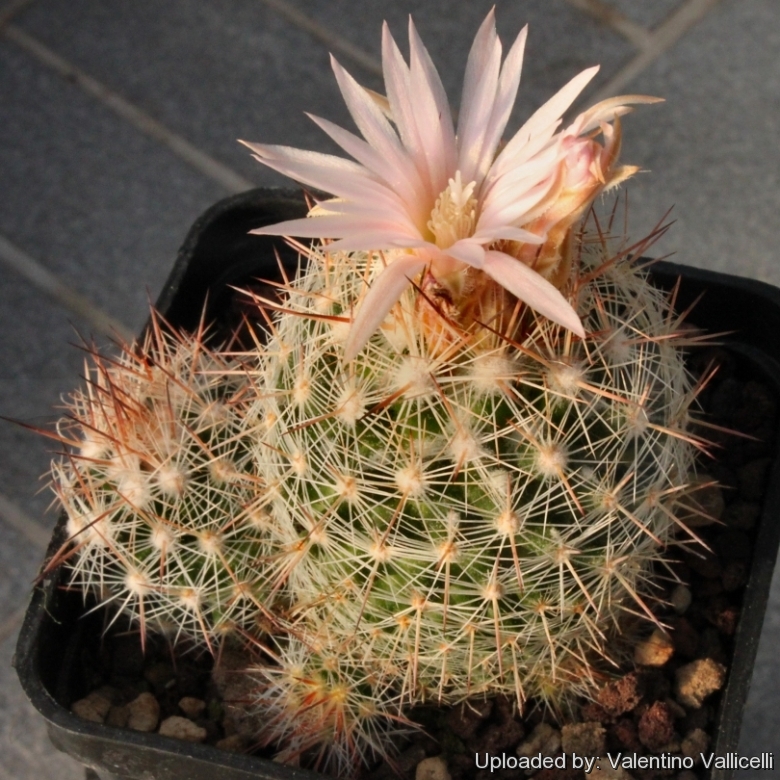
Cactus tuberculosus (Escobaria tuberculosa) Photo by: Valentino Vallicelli
SB80 Cuidad Juarez, Chihuahua, Mexico
Origin and Habitat: Southeastern Arizona, southern New Mexico and Trans-Pecos Texas in the United States, and south into northern Mexico (Chihuahua, Coahuila, Durango, Nuevo León and Zacatecas).
Type locality: Mexico: Chihuahua: Flounce Mountains, below El Paso, below San Elisario on the Río Grande.
Altitude range: Escobaria tuberculosaSN|10187]]SN|10187]] grows at elevations of 600 to 1,600 metres above sea level.
Habitat and Ecology: The species grows in rocky slopes, limestone or igneous, in desert scrub, in crevices and cliffs. It has been reported from limestone soils of hills, canyons, and alluvial fans in deserts and grasslands. Accompanying cactus and succulent species can be Ariocarpus fissuratusSN|2114]]SN|2114]], Echinocereus dasyacanthusSN|5533]]SN|5533]], and Coryphantha muehlenpfordtiiSN|10322]]SN|10322]].
Escobaria tuberculosaSN|10187]]SN|10187]] has a very wide range, is abundant, and there are no threats.
Synonyms:
See all synonyms of Escobaria tuberculosa
back
Accepted name in llifle Database:Escobaria tuberculosa (Engelm.) Britton & RoseCactaceae (Britton & Rose) 4: 54 (fig. 51). 1923Synonymy: 16
back
Common Names include:
ENGLISH: White Column Foxtail Cactus, Cob Cactus, Corn Cob, Cob-Cory Cactus, Corn Cob Cactus, Arizona Pincushion, Corncob Cactus, Incense Cory Cactus
SPANISH (Español): Biznaga-Escobar Rómbica
Description: Escobaria tuberculosaSN|10187]]SN|10187]] is a small branched and small stemmed cactus(to 50 branches) but sometimes solitary and large stemmed.
Stems: Ovoid to cylindric up to 12 (18) cm tall, 7 cm in diameter.
Tubercles: More or less regularly arranged in spirals, and firm, areolar glands are absent.
Spines: 21-41 per areole, ashy white, grey, or pale tan in colour, with the tips of the largest spines reddish brown or reddish black, all straight. Radial spines numerous (15-41 per areole), 4-15 mm long, grey to white, sometimes as many as 30. Central spines several, stouter than radials, brown to blackish or colored only at tips
Flowers: The flowers are apical or nearly so, pure white, pale rose-pink, or pale lavender-pink, darker centrally, 2,5 to 4 cm in diameter.
Fruit: Oblong, bright red not very succulent; the floral remnant is strongly persistent.
Subspecies, varieties, forms and cultivars of plants belonging to the Escobaria tuberculosa group
 Escobaria tuberculosa (Engelm.) Britton & Rose: Stem extremely variable branched and small but sometimes solitary and larger. Spines 21-41 per areole, ashy white, grey, or pale tan in colour, with the tips of the largest spines reddish brown or reddish black.
Escobaria tuberculosa (Engelm.) Britton & Rose: Stem extremely variable branched and small but sometimes solitary and larger. Spines 21-41 per areole, ashy white, grey, or pale tan in colour, with the tips of the largest spines reddish brown or reddish black.- Escobaria tuberculosa var. durispina (Quehl) Borg
 Escobaria tuberculosa f. gigantea n.n.: has larger stems up to 20 cm tall and remain usually unbranched, but apart the solitary growth habit and larger dimension, it doesen't appear to differ from the typical Escobaria tuberculosa in any significant respect.
Escobaria tuberculosa f. gigantea n.n.: has larger stems up to 20 cm tall and remain usually unbranched, but apart the solitary growth habit and larger dimension, it doesen't appear to differ from the typical Escobaria tuberculosa in any significant respect.- Escobaria tuberculosa var. varicolor (Tiegel) S.Brack & K.D.Heil
Bibliography: Major references and further lectures
1) Edward Anderson “The Cactus family” Timber Press, Incorporated, 2001
2) James Cullen, Sabina G. Knees, H. Suzanne Cubey "The European Garden Flora Flowering Plants: A Manual for the Identification of Plants Cultivated in Europe, Both Out-of-Doors and Under Glass" Cambridge University Press, 11/Aug/2011
3) David R Hunt; Nigel P Taylor; Graham Charles; International Cactaceae Systematics Group. "The New Cactus Lexicon" dh books, 2006
4) Terry, M., Heil, K. & Corral-Díaz, R. 2013. Escobaria tuberculosa. The IUCN Red List of Threatened Species. Version 2015.2. <www.iucnredlist.org>. Downloaded on 21 July 2015.
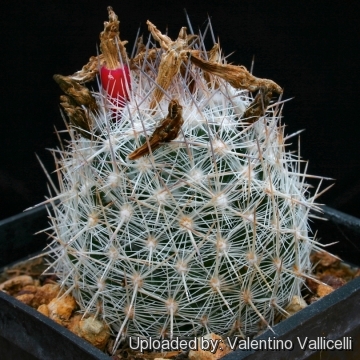 SB79 Jimenez, Chihuahua, Mexico (Escobaria tuberculosa) Photo by: Valentino Vallicelli
SB79 Jimenez, Chihuahua, Mexico (Escobaria tuberculosa) Photo by: Valentino Vallicelli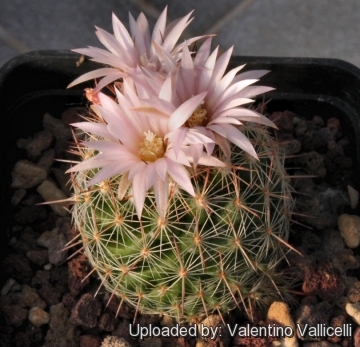 SB80 Cuidad Juarez, Chihuahua, Mexico (Escobaria tuberculosa) Photo by: Valentino Vallicelli
SB80 Cuidad Juarez, Chihuahua, Mexico (Escobaria tuberculosa) Photo by: Valentino Vallicelli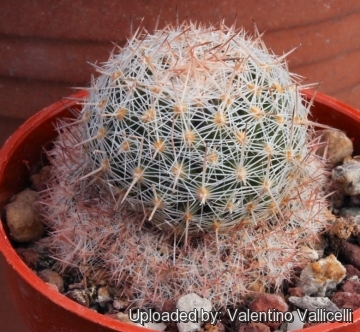 Cactus tuberculosus (Escobaria tuberculosa) Photo by: Valentino Vallicelli
Cactus tuberculosus (Escobaria tuberculosa) Photo by: Valentino Vallicelli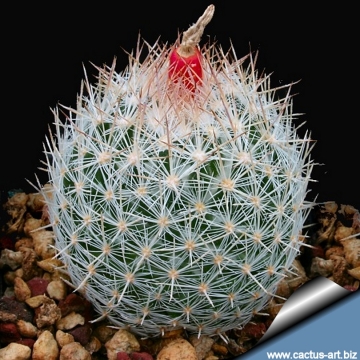 Cactus tuberculosus (Escobaria tuberculosa) Photo by: Cactus Art
Cactus tuberculosus (Escobaria tuberculosa) Photo by: Cactus ArtCultivation and Propagation: Easy to cultivate in a very gritty substrate with much drainage. Water regularly in summer, but do not overwater (very rot prone), it prefer a completely dry place during winter. An unheated greenhouse would be perfect. It can survive low temperatures (appr. -12 C). Full sun to light shade.
Propagation: Seeds (no dormancy requirement, they germinate best at 25°C in spring) or usually by offsets (readily available), or occasionally grafted.














